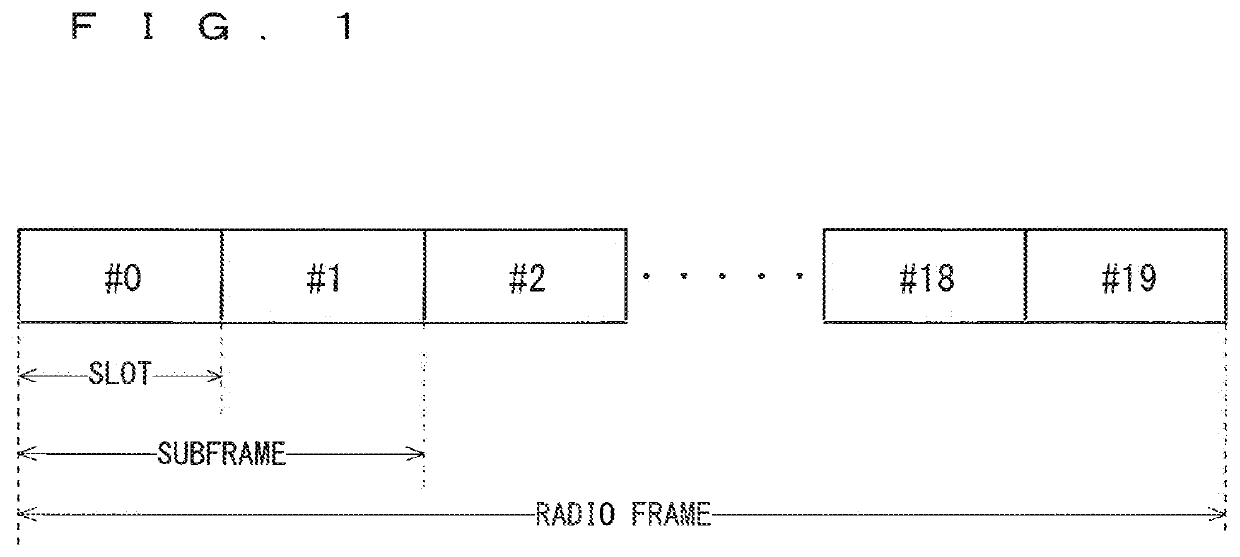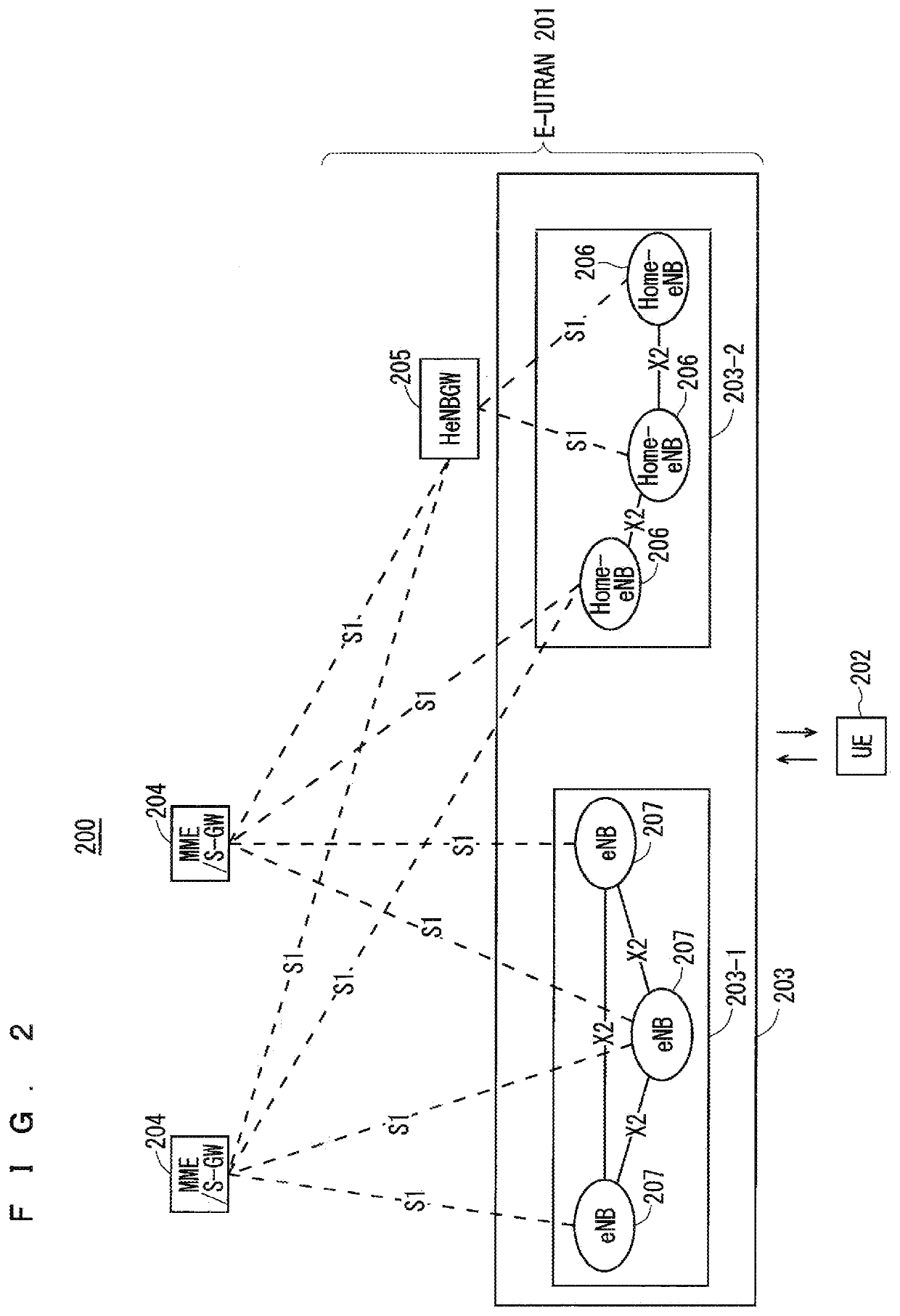Communication system, base station and communication terminal
a communication terminal and base station technology, applied in the field of communication systems, can solve problems such as collision risks, and achieve the effects of reducing the latency of communication between the base station device and increasing the power consumption of the communication terminal device, and saving the power consumption required for reception
- Summary
- Abstract
- Description
- Claims
- Application Information
AI Technical Summary
Benefits of technology
Problems solved by technology
Method used
Image
Examples
first embodiment
[0104]FIG. 2 is a block diagram showing an overall configuration of an LTE communication system 200, which is under discussion of 3GPP. FIG. 2 will be described. A radio access network is referred to as an evolved universal terrestrial radio access network (E-UTRAN) 201. A user equipment device (hereinafter, referred to as a “user equipment (UE)”) 202 that is a communication terminal device is capable of radio communication with a base station device (hereinafter, referred to as a “base station (E-UTRAN Node B: eNB)”) 203 and transmits and receives signals through radio communication.
[0105]Here, the “communication terminal device” covers not only a user equipment device such as a movable mobile phone terminal device, but also an unmovable device such as a sensor. In the following description, the “communication terminal device” may be simply referred to as a “communication terminal”.
[0106]The E-UTRAN is composed of one or a plurality of base stations 203, provided that a control pro...
second embodiment
[0277]The physical control channel to which uplink control information (UCI) is to be mapped is the PUCCH in the LTE. The PUCCH resources are set to each UE. For example, the scheduling request (SR) configuration such as the PUCCH resources for SR and the SR period is set to each UE (see 3GPP TS 36.211 V14.0.0 (hereinafter referred to as “Reference 3”) and 3GPP TS 36.213 V14.0.0 (hereinafter referred to as “Reference 4”). The RRC signaling is used in these settings (see 3GPP TS 36.331 V14.0.0 (hereinafter referred to as “Reference 5”)).
[0278]Multi-beamforming (MBF) requiring the beam sweeping is being studied in the NR. The MBF requiring the beam sweeping requires switching between beams to cover all the coverages. Since one subframe is solely used for transmitting and receiving one beam, the subframe cannot be used for transmitting and receiving the other beams. Thus, the conventional LTE setting method for configuring PUCCH resources for a plurality of UEs in one subframe has a pr...
second modification
of Second Embodiment
[0502]The first modification of the second embodiment discloses increasing the use efficiency of the radio resources through setting of the PUCCH resources for each UE to the UE. With the periodic setting of the PUCCH resources, however, communication needs to be always performed, with the timing, via a beam to which the PUCCH resources are set. In the presence of communication requiring the low latency via the other beams, a problem of a communication failure via a beam to which the PUCCH resources are set arises.
[0503]The second modification will disclose a method for solving such a problem.
[0504]The cell sets the PUCCH resources to the UE in a subframe identical to the subframe in which the DL resources are configured for the beams via which the UE communicates. The UE transmits the PUCCH in a subframe identical to the subframe in which the downlink signal for the serving beam is transmitted. In the NR, the self-contained subframe that consists of DL resources...
PUM
 Login to View More
Login to View More Abstract
Description
Claims
Application Information
 Login to View More
Login to View More - R&D
- Intellectual Property
- Life Sciences
- Materials
- Tech Scout
- Unparalleled Data Quality
- Higher Quality Content
- 60% Fewer Hallucinations
Browse by: Latest US Patents, China's latest patents, Technical Efficacy Thesaurus, Application Domain, Technology Topic, Popular Technical Reports.
© 2025 PatSnap. All rights reserved.Legal|Privacy policy|Modern Slavery Act Transparency Statement|Sitemap|About US| Contact US: help@patsnap.com



